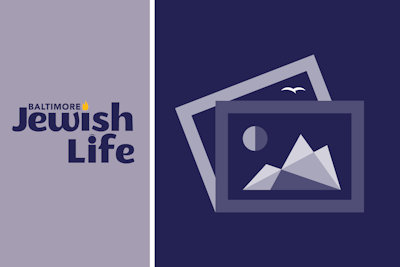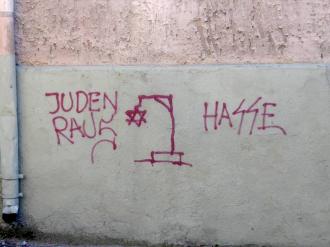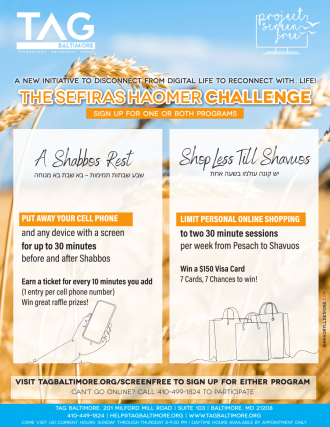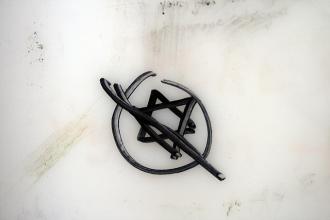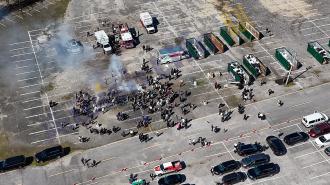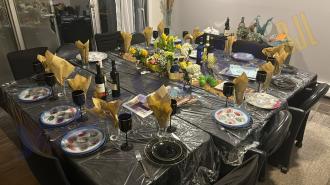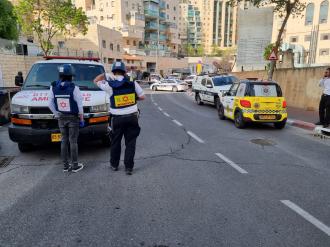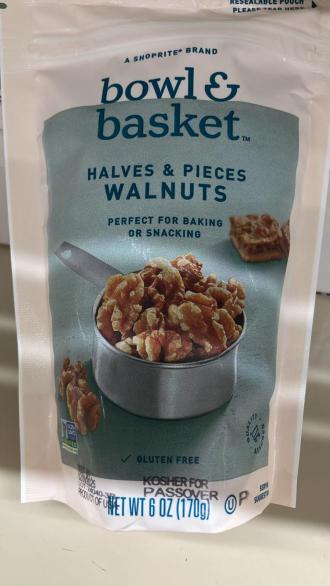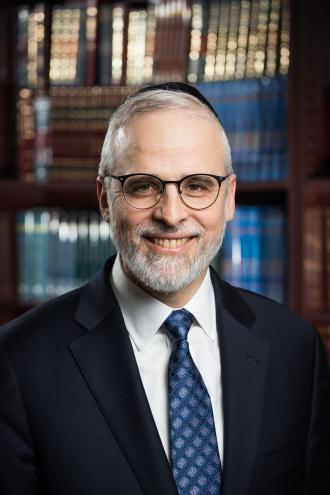There was a small hole in the kitchen floor that led to a secret crawl space. That image is burned into my memory. The space was maybe five feet long by five feet wide.
The owner of the house said, “They used to fit six people inside there. When the Nazis would come.”
His name was Tadeusz Skoczylas, and the house we were in had belonged to his family during World War II. It was a small brick house in the town of Ciepielów, Poland. It had a red roof that had seen better days. The front door was just a few steps off the street. In the backyard were a few barns and other small shacks.
I had been in Poland for a few days already, and the horror of the history I had experienced was overwhelming. But this was something different. This was so personal.
I’m looking at this tiny space. And I’m imagining six people down there, hiding from death. Six real people. Crawling through that little hole right in front of me. Not that long ago. It wasn’t a history book. It wasn’t a museum. It was right there.
Tadeusz explained that one day in 1942, Nazi soldiers visited the house on a tip. Someone in the village had told them that the family had been harboring Jewish people. There were supposed to be 10 Skoczylas living in the house. On this particular day, the youngest boy in the family was not home when the soldiers came by. The Nazis grew suspicious and began tearing the house apart. They found the hole and the crawl space, but the Jewish people the family had been hiding were not there. They had already moved on.
Without saying a word, the Nazis went next door to a neighboring family and took their young son. The punishment for hiding Jews was death for the entire family, and they had a quota to fill.
The soldiers took all 10 people out back and executed them right in front of those barns and shacks that are still standing there today.
When the little Skoczylas boy returned home, he found his entire family dead.
That little boy was Tadeusz’s grandfather. The house stayed in the Skoczylas family, and his grandfather lived in it. Now Tadeusz and his mother live in it.
I couldn’t believe it. And as I walked through the rest of the house, this feeling sort of took over me. There was all this history right in front of me. And it was real. I could reach out and touch it. I could feel it between my fingers and smell it in the air. It was a tangible thing.
I took that trip just a few months ago. It was my first time in Poland. I went there to learn more about something that had fascinated me since I was a teenager: the Holocaust. I’d read so many books and articles about it, but reading words on a page is not the same thing as seeing things up close.
Then I visited the Holocaust museum in Washington, D.C., for the first time. It was 1998, and I was playing for the Milwaukee Bucks. I was in D.C. meeting our owner, Herb Kohl, over the summer. We had some time free time on my last day in the city, and Mr. Kohl suggested we go to the Holocaust Museum on the National Mall. I’ll never forget how I felt after those two hours in there — I could have spent two days. My immediate feeling was that everyone needs to go there.
There was one room in particular, though, that I think about often. It’s filled with photos of Jews from a town in Poland. The pictures line the walls and extend up toward the sky, where light floods in from a window. Almost 90% of the people in the images were sent to their death. Before they were taken to concentration camps or executed, they would leave their prized possessions behind with friends or family.
The people of these Jewish communities were pushed to the absolute limit of their human instincts. They just wanted to survive. And from that, the tales of brotherhood and camaraderie are so awe-inspiring. It was a reminder of what the human spirit is capable of — both for good and evil.
Honestly … it made me feel sort of irrelevant. Which was a strange thought to have as a young NBA player who was supposed to be on top of the world. I was realizing that there were things outside of my bubble that mattered so much more. I wanted my teammates to feel that as well. So every team I played on after that, whenever we were in D.C. playing the Wizards, I would ask our coach if we had time to go through the museum. Every visit was different, but each guy came out thanking me for taking us there. I could see in their eyes that they had a different perspective on life after that experience.
I thought I knew what the Holocaust was, and what...read more at The Players Tribune
There was a small hole in the kitchen floor that led to a secret crawl space. That image is burned into my memory. The space was maybe five feet long by five feet wide.
The owner of the house said, “They used to fit six people inside there. When the Nazis would come.”
His name was Tadeusz Skoczylas, and the house we were in had belonged to his family during World War II. It was a small brick house in the town of Ciepielów, Poland. It had a red roof that had seen better days. The front door was just a few steps off the street. In the backyard were a few barns and other small shacks.
I had been in Poland for a few days already, and the horror of the history I had experienced was overwhelming. But this was something different. This was so personal.
I’m looking at this tiny space. And I’m imagining six people down there, hiding from death. Six real people. Crawling through that little hole right in front of me. Not that long ago. It wasn’t a history book. It wasn’t a museum. It was right there.
Tadeusz explained that one day in 1942, Nazi soldiers visited the house on a tip. Someone in the village had told them that the family had been harboring Jewish people. There were supposed to be 10 Skoczylas living in the house. On this particular day, the youngest boy in the family was not home when the soldiers came by. The Nazis grew suspicious and began tearing the house apart. They found the hole and the crawl space, but the Jewish people the family had been hiding were not there. They had already moved on.
Without saying a word, the Nazis went next door to a neighboring family and took their young son. The punishment for hiding Jews was death for the entire family, and they had a quota to fill.
The soldiers took all 10 people out back and executed them right in front of those barns and shacks that are still standing there today.
When the little Skoczylas boy returned home, he found his entire family dead.
That little boy was Tadeusz’s grandfather. The house stayed in the Skoczylas family, and his grandfather lived in it. Now Tadeusz and his mother live in it.
I couldn’t believe it. And as I walked through the rest of the house, this feeling sort of took over me. There was all this history right in front of me. And it was real. I could reach out and touch it. I could feel it between my fingers and smell it in the air. It was a tangible thing.
I took that trip just a few months ago. It was my first time in Poland. I went there to learn more about something that had fascinated me since I was a teenager: the Holocaust. I’d read so many books and articles about it, but reading words on a page is not the same thing as seeing things up close.
Then I visited the Holocaust museum in Washington, D.C., for the first time. It was 1998, and I was playing for the Milwaukee Bucks. I was in D.C. meeting our owner, Herb Kohl, over the summer. We had some time free time on my last day in the city, and Mr. Kohl suggested we go to the Holocaust Museum on the National Mall. I’ll never forget how I felt after those two hours in there — I could have spent two days. My immediate feeling was that everyone needs to go there.
There was one room in particular, though, that I think about often. It’s filled with photos of Jews from a town in Poland. The pictures line the walls and extend up toward the sky, where light floods in from a window. Almost 90% of the people in the images were sent to their death. Before they were taken to concentration camps or executed, they would leave their prized possessions behind with friends or family.
The people of these Jewish communities were pushed to the absolute limit of their human instincts. They just wanted to survive. And from that, the tales of brotherhood and camaraderie are so awe-inspiring. It was a reminder of what the human spirit is capable of — both for good and evil.
Honestly … it made me feel sort of irrelevant. Which was a strange thought to have as a young NBA player who was supposed to be on top of the world. I was realizing that there were things outside of my bubble that mattered so much more. I wanted my teammates to feel that as well. So every team I played on after that, whenever we were in D.C. playing the Wizards, I would ask our coach if we had time to go through the museum. Every visit was different, but each guy came out thanking me for taking us there. I could see in their eyes that they had a different perspective on life after that experience.
I thought I knew what the Holocaust was, and what...read more at The Players Tribune
